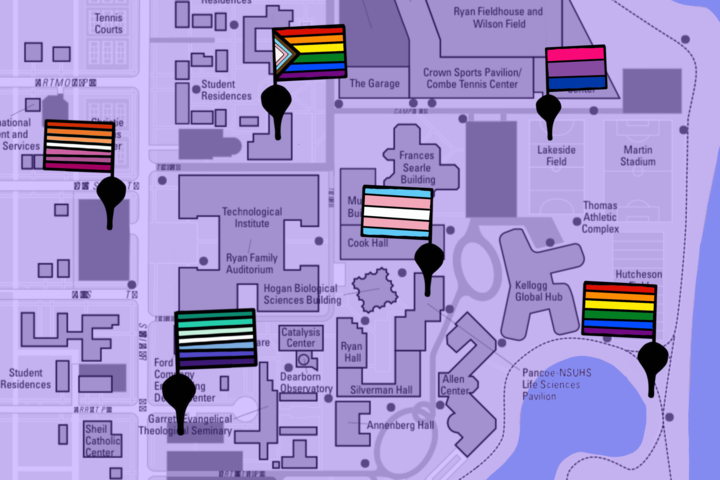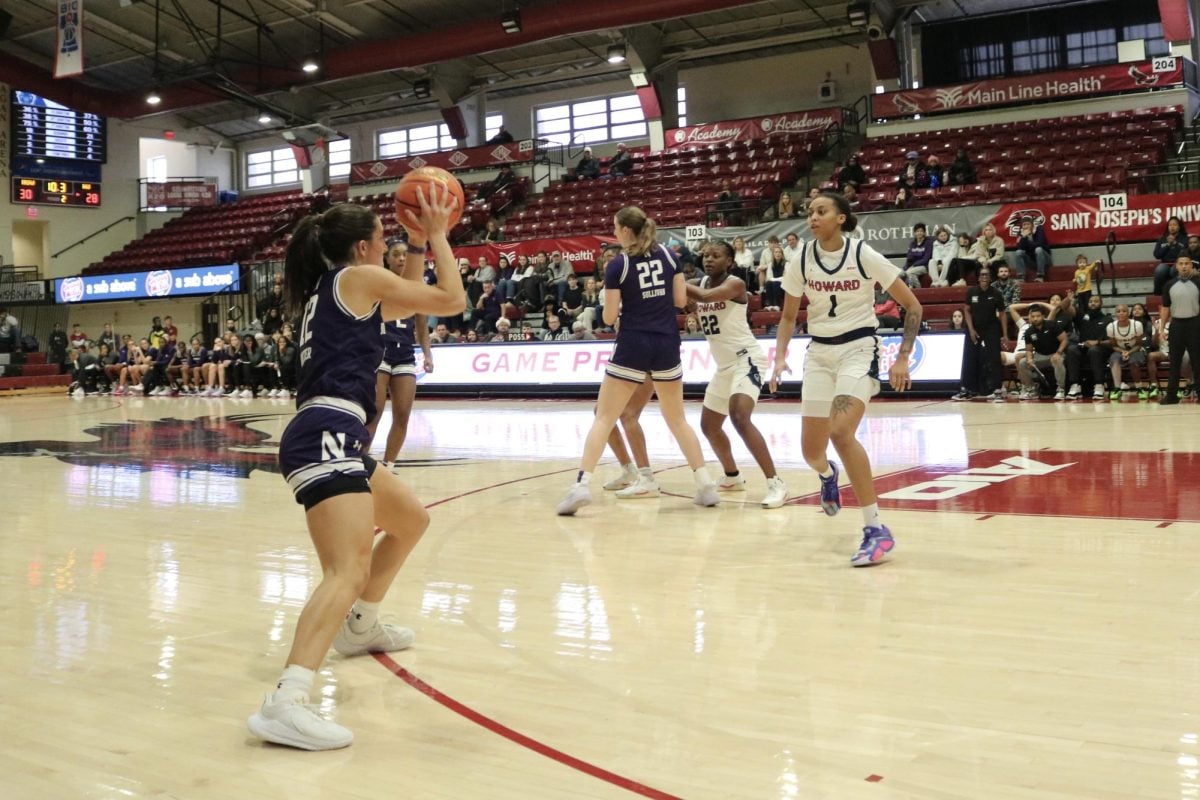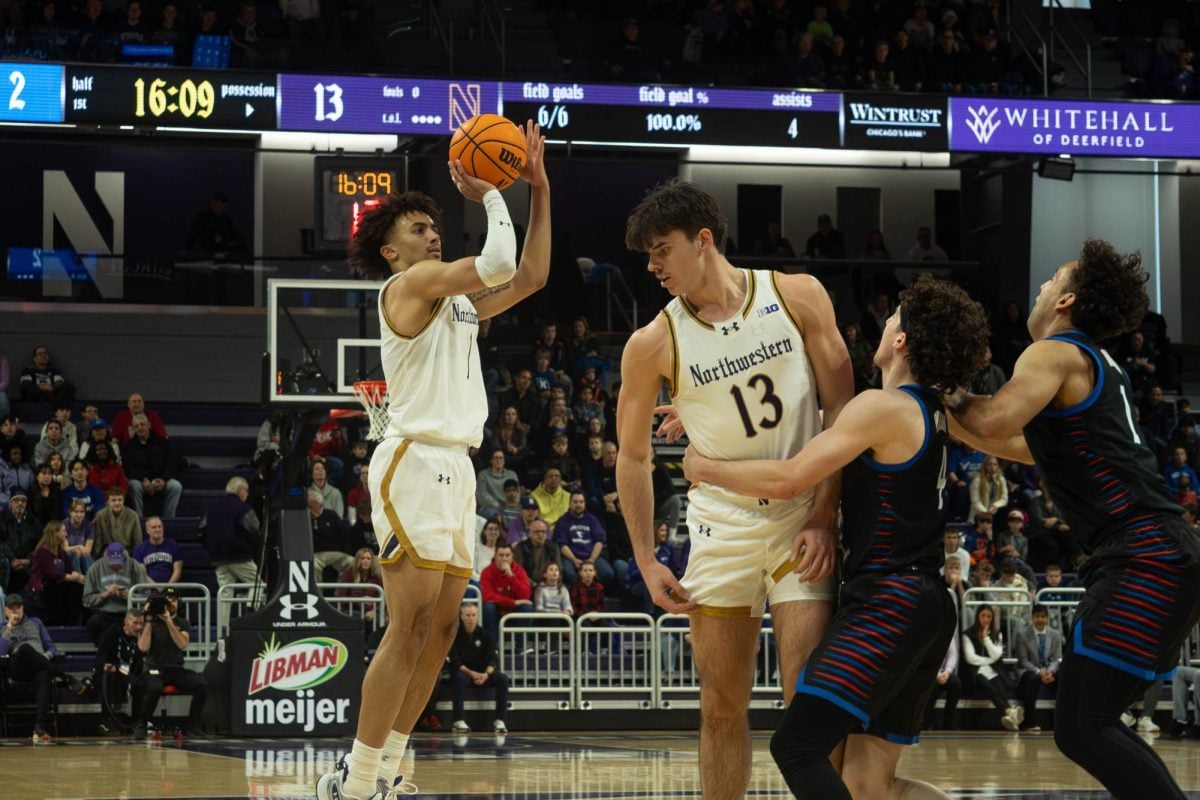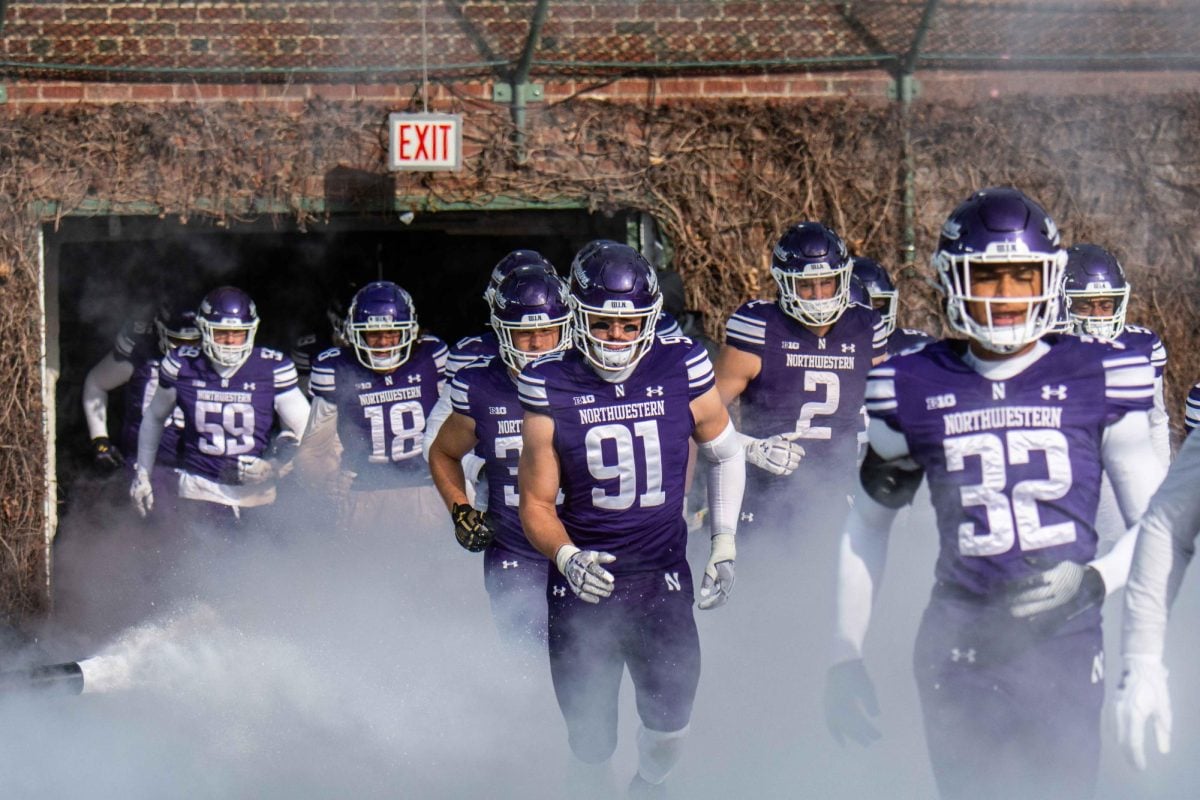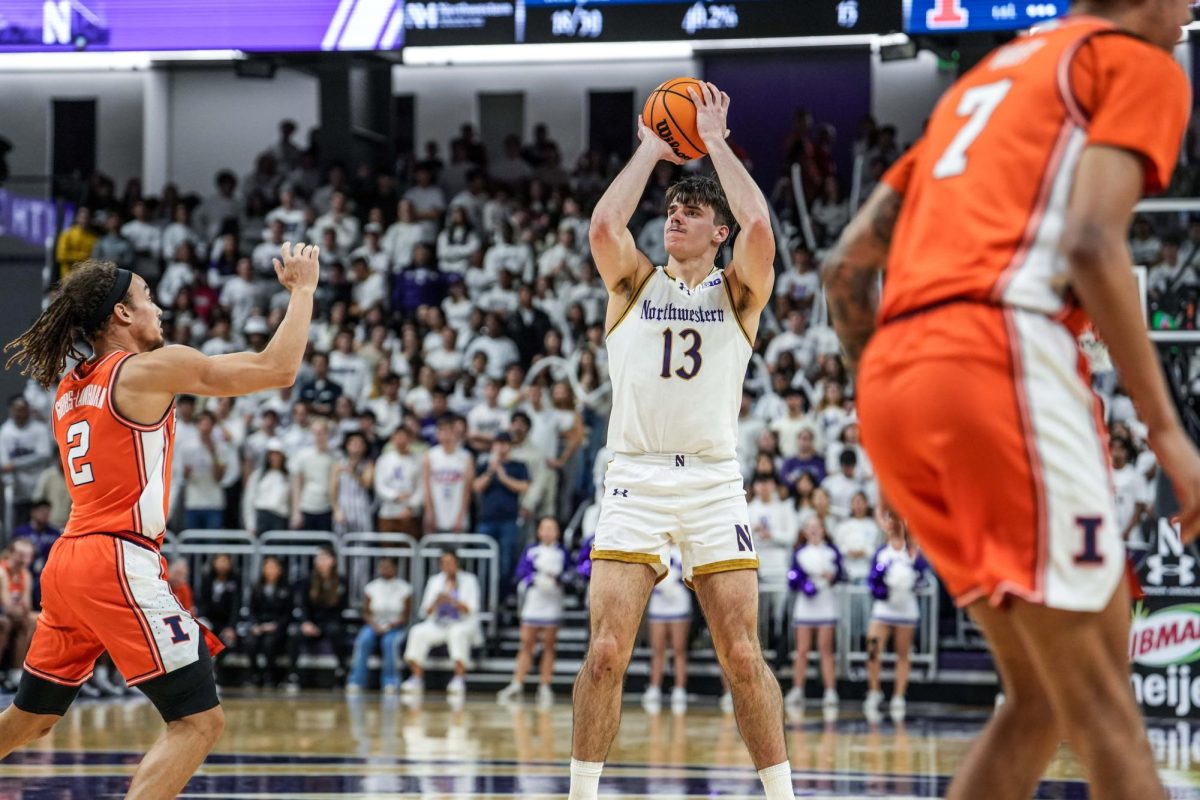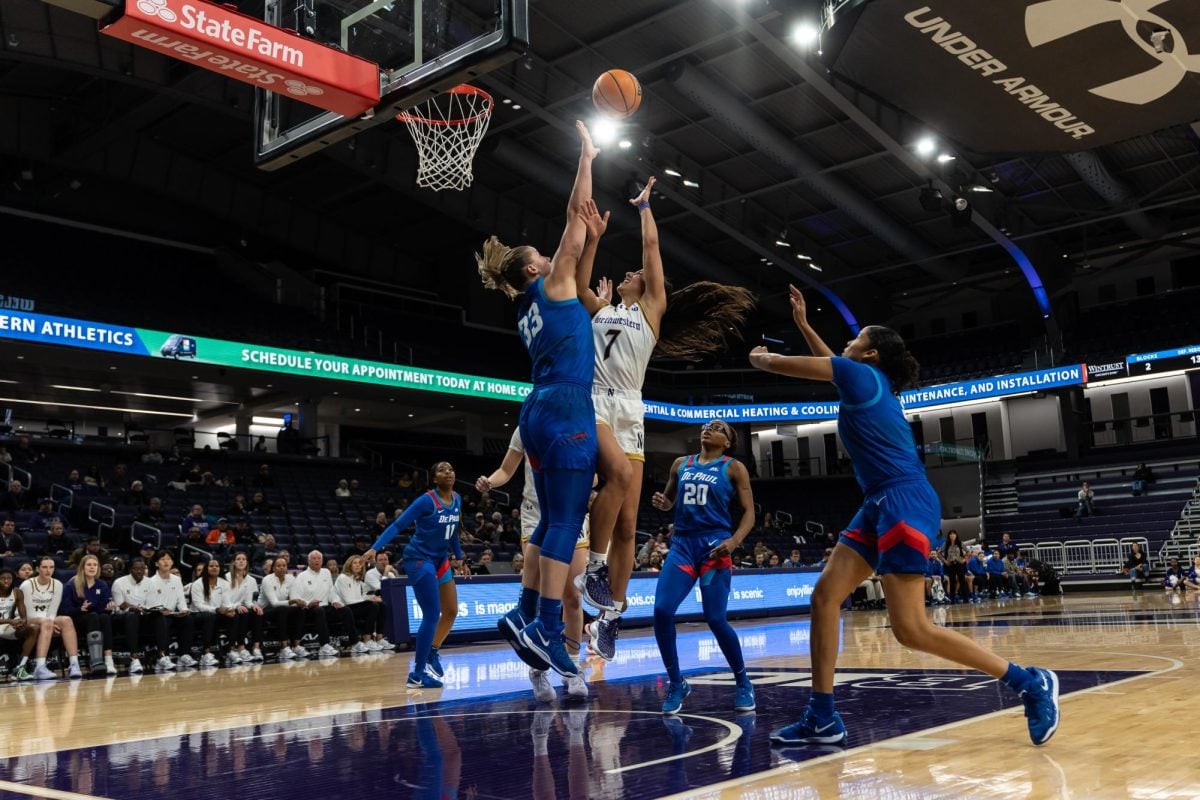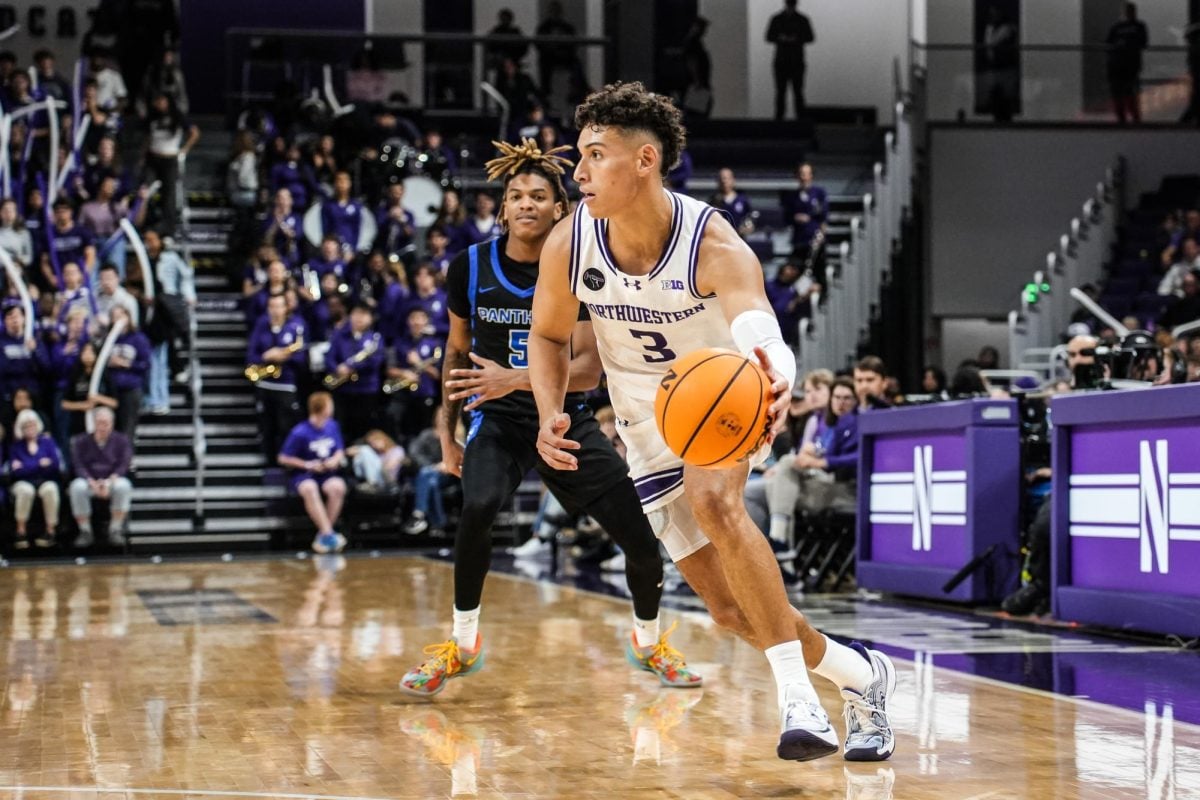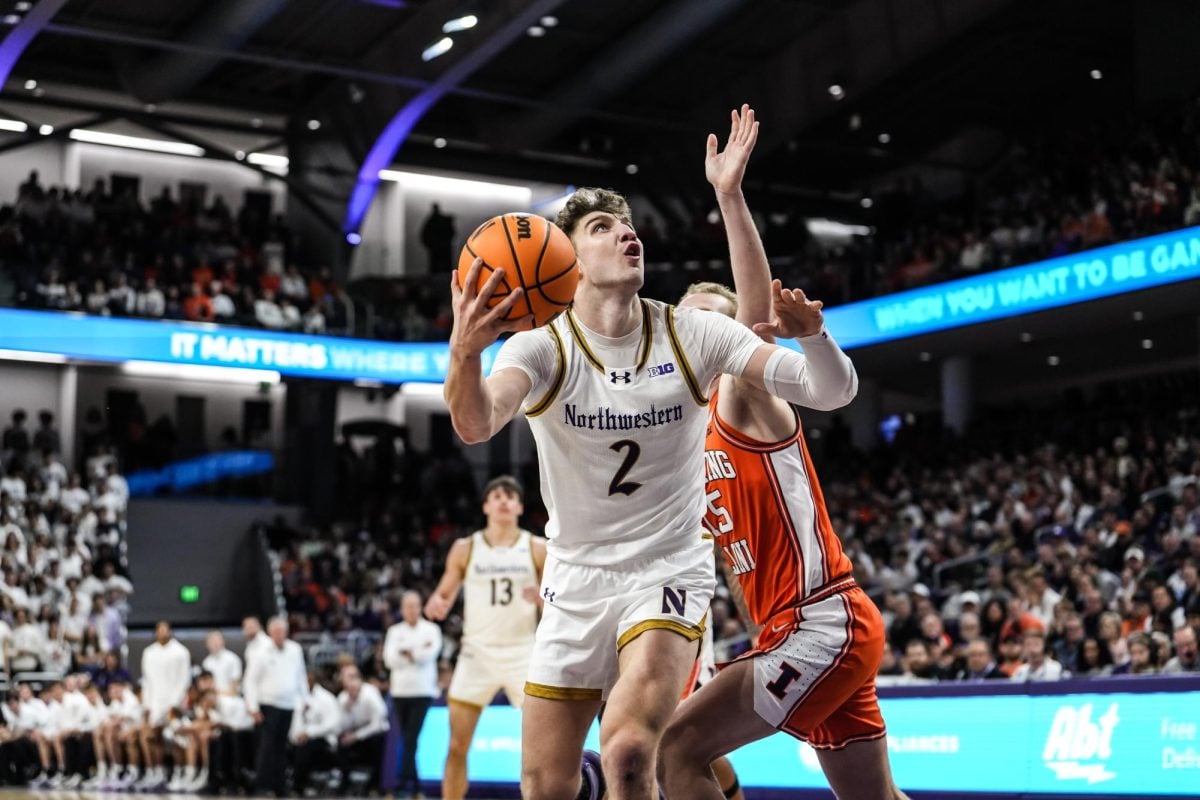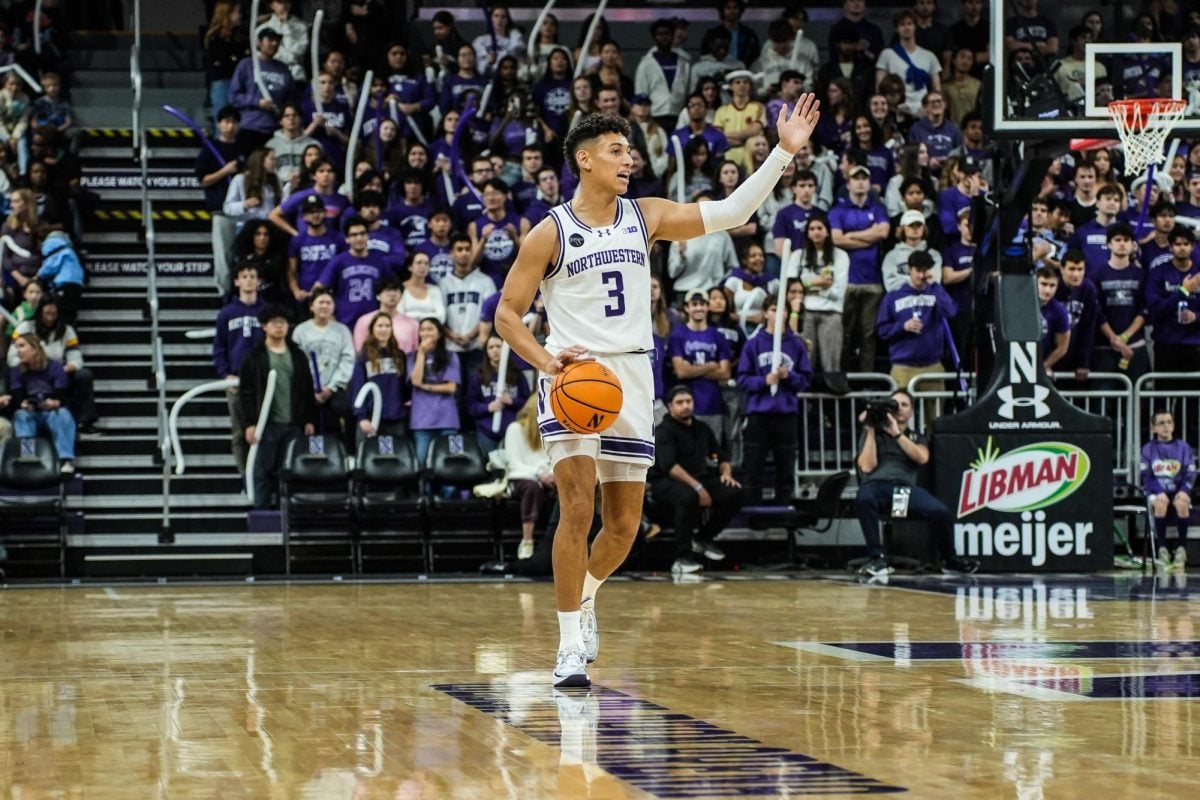Northwestern freshman Aaron, who wanted to use a pseudonym for safety, hovered his computer mouse over Shepard Hall on a map before dropping a pin with a message.
“I had my first kiss on campus in Shepard. It was the first time I felt I could be openly gay,” read his note.
Aaron just added a digital landmark on Queering The Map, an interactive online platform where LGBTQ+ people can tag a location and share an anonymous experience. Like many other queer people, Aaron uses digital spaces to express himself in ways he can’t in his daily life.
Lucas LaRochelle, a 27-year-old digital artist who is nonbinary, told The New York Times last year they created Queering The Map as a class project in 2017 while they were a student at Concordia University. LaRochelle was the first to share their experiences on the site before hosting hundreds of thousands of pins across the globe.
Aaron, who is bisexual, is closeted back home in New Jersey. But at Northwestern, he used the platform to express himself freely.
“This was one step closer to my liberation,” Aaron said. “This is a symbolic way of doing it by having an actual mark on campus.”
Former Communication and Medill adjunct assistant professor Bill Healy (SESP ‘07, Medill ‘09) who is gay, said Queering The Map makes people feel part of a much larger community.
“There’s so much power in visibility, in claiming space and making it your own landmark,” Healy said.
Unlike Grindr, an app that facilitates “sexual experiences” for queer men, Queering The Map provides an “emotional transaction” between strangers, Healy said.
He said he pinned a note near his home before realizing the dangers of sharing his address online. Healy said he’s worried about the threat of doxxing for sharing queer stories publicly.
“Is somebody going to come set fire to my house now?” Healy said. “I don’t want to get stuck living in fear, but I don’t want to ignore the reality of the world we live in and the dangers inherent in the Internet.”
The site brings up questions on whether it should be open to straight people. While the platform is generally open to anyone with internet access, some say it should remain a safe space for queer people around campus.
“If (straight people) are going to spend their time and energy on this Earth intentionally trying to ruin a place of joy for other people, they really should investigate what their intentions are and what values they have,” said Matthew Abtahi, director of the Gender and Sexuality Resource Center.
Straight people should act as bystanders to observe and learn, he said.
Queering The Map reminds him of the “Missed Connections” section of Craigslist where users post online about strangers they hoped to connect with. Queering The Map takes its place by providing a “bulletin board of stories” that deeply engages queer and straight people alike.
Across campus, dozens of NU students continue to use the site despite concerns.
“The first place the boy I’m going to marry and I said I love you. He’s everything to me,” read one pin attached to Main Library.
“[The] first time I came out of the closet. All of my fraternity brothers were super supportive,” read another pin attached to a campus fraternity house.
But the site isn’t limited to just NU students.
Mount Prospect native Rachel Barrientos, who is unsure about her sexuality, visited campus often and placed a pin near Allison Hall that read, “I kissed a girl here for the first time.”
“The site is reassuring for people like me who may not feel comfortable expressing their true selves,” Barrientos said.
Now at Boston University, she’ll always remember her first queer experience on campus, she said.
Email: [email protected]
Twitter: @jorgemart0211
Related Stories:
— Evanston Pride, PFLAG, Gender Affirming Evanston celebrate queer joy
— NU queer parenting support group fosters awareness, community
